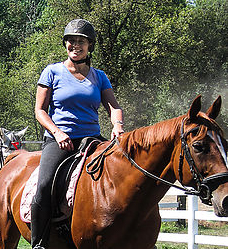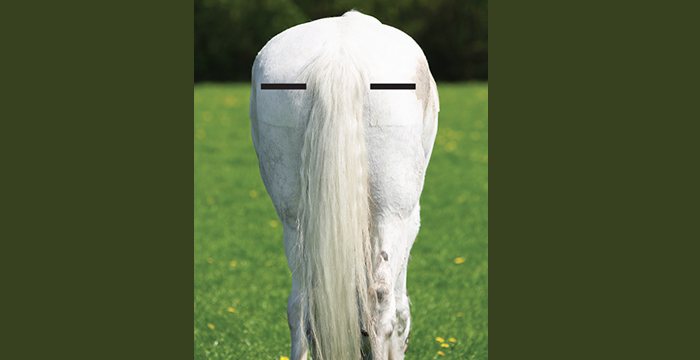Recognizing lameness in the hindlimbs can be slightly trickier than in the front legs. Generally, there is more movement and some compensation going on throughout the horse’s body. This can cause other limbs to look “off” and confuses the evaluator.
In this month’s article we will discuss hindlimb lameness and the common signs we see, how to evaluate the lame limb, and possible diagnostics used once your veterinarian arrives. Again, any one of these topics could be an article series by itself, so please contact me or your personal veterinarian with further questions.
Hindlimb lameness is common throughout our horse population. The lameness seen can be slightly more variable than what is seen in the forelimb. Again, it’s important to train your eye to see these lamenesses, as owners frequently confuse the limbs. As always, it’s important to move the horse in a straight line toward and away from you, in circles in both directions, and in different footings (soft and firm).
In general, these are tips to help you recognize where and how the horse is lame:
- In severe hindlimb lameness you will notice the head and neck come up when the lame leg is on the ground. Note: This reaction is opposite of lameness in the forelimb and can be a point of confusion. This is due to the body trying to shift its weight to the sound leg. When the lame leg is on the ground, in the stance phase, the horse’s back and neck tenses.
- There will be less extension or drop of the fetlock on the lame leg.
- There will be deviation in the way the lame leg’s hip moves. This can be more easily seen by placing tape on the point of the rump at the level of the hip joint. This will help your eye pick up the deviation in movement.
- You can use different wrap or boot colors on the limbs and then watch the horse move on the line.
- In general, if the horse is lame when the limb is on the inside of a circle it’s the hock or below. If the horse is lame with the limb on the outside of the circle it’s the hock or above.
- Toe drag is common in hock sore horses. You will see this as excessively worn toes and can sometimes be seen as a “square toe”.
- Stifle soreness can frequently be seen during straight line movement as the limb being swung out before being brought forward. They do this so they do not need to flex the limb as much in order to advance the limb forward. Riding the horse, you may feel some stifle soreness or weakness as them “falling out from under you”. This is the feeling of tripping in the hind end that you may have while riding the horse.
Veterinarians perform flexions in the hindlimbs as with the forelimb, but slightly differently due to anatomy. The distal limb flexion is the same as the forelimb. But when we flex the upper limb, the stifle and hock need to flex together due to the anatomy and the peroneus tertius ligament. It can be difficult to tease the pain of these two joints apart in flexions, but we do our best with different types of flexions along with taking into account the other various parts of the lameness evaluation.
Please remember that this is a very brief overview of how we detect lameness and some tricks in how to evaluate your horse. There are numerous ways to evaluate lameness, and you will see different techniques and styles used by veterinarians. I hope this is helpful in improving your eye!
NW Horse Source Editor’s Note: For part one of this series please see our February 2020 issue.
View the full May 2020 edition here.

Carla Christian is a writer and photographer who uses her craft to tell stories about the people and the communities around her. Carla lives on a small horse farm near Battle Ground, WA with her husband and a family of feral cats, where she rides dressage and trails with her much-adored Shagya mare, Cantata. In her spare time she enjoys time with grown children, hiking, gardening, and reading a good book (the paper kind). Follow her on Facebook at www.facebook.com/carlachristianphotography
or visit www.carlachristian.com.






